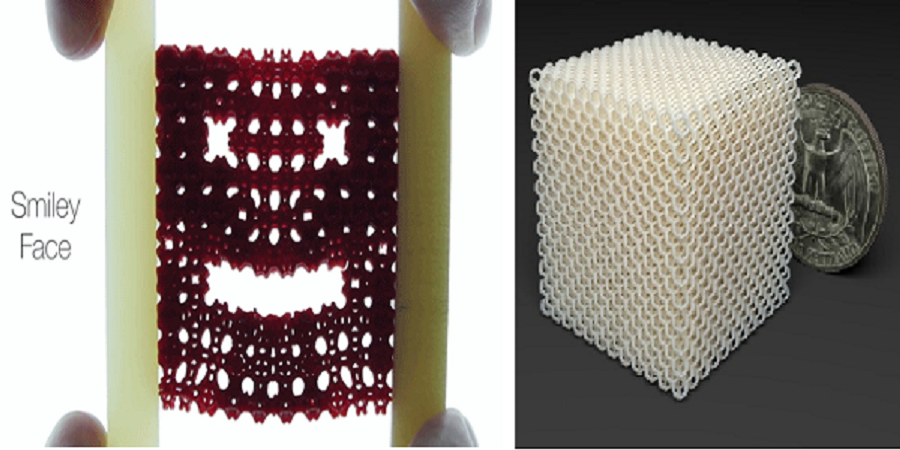It’s impressive beyond belief really that we can manage not only to make 3D products from our homes, nearly out of thin air, but also that we can now make use of materials that are like none we’ve ever seen before–and bend them almost completely to our will–causing them to adapt to certain environments and allowing for a host of contemporary new conveniences.
Materials research, something that used to sound rather intimidating and rather vague in one of those super-scientific manners, is now something we hear about on a regular basis. And we’re seeing results in the form of materials like elastic textures, recently demonstrated from research by Julian Panetta, Qingnan Zhou, Luigi Malomo, Nico Pietroni, Paolo Cignoni, and Denis Zorin.
In researching the microstructures, the scientists were able to create some forms that are not only aesthetically pleasing but also interesting in that the 3D printed material is made of tileable, cubic patterns that are exponentially softer than other patterns, and doesn’t require any supports while being manufactured.
“Using a combinatorial search over topologies followed by shape optimization, we explore a wide space of wireframe-like, symmetric 3D patterns to obtain a small family,” states the research team. “This pattern family can be printed without internal support structure on a single-material 3D printer and can be used to fabricate objects with prescribed mechanical behavior.”
Control in bending and twisting are also afforded by the innovative material, best demonstrated upon being squeezed in a vice grip. This would seem to be a perfect example of how it could withstand stress in a construction situation, reverting back to its natural shape afterward.
Have you been involved in 3D printing any soft and flexible fabric microstructures like these? Discuss in the 3D Printed Microstructures forum thread over at 3DPB.com.
